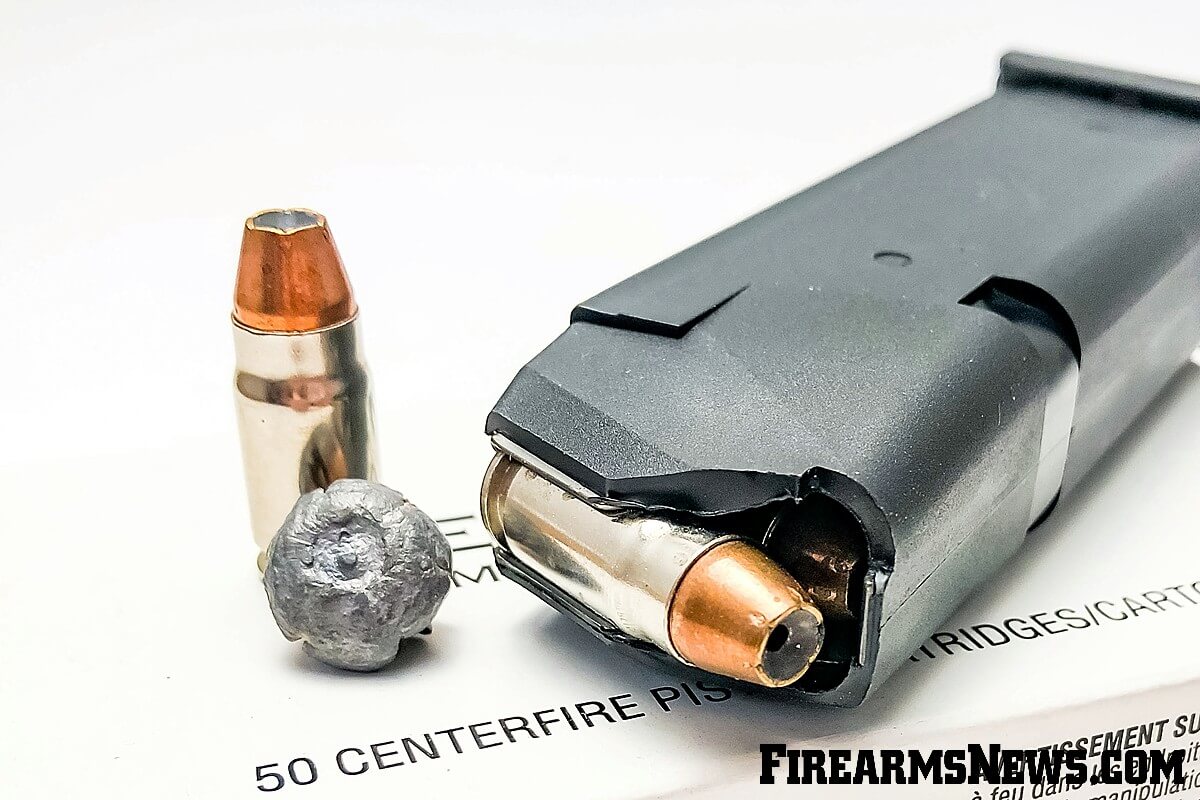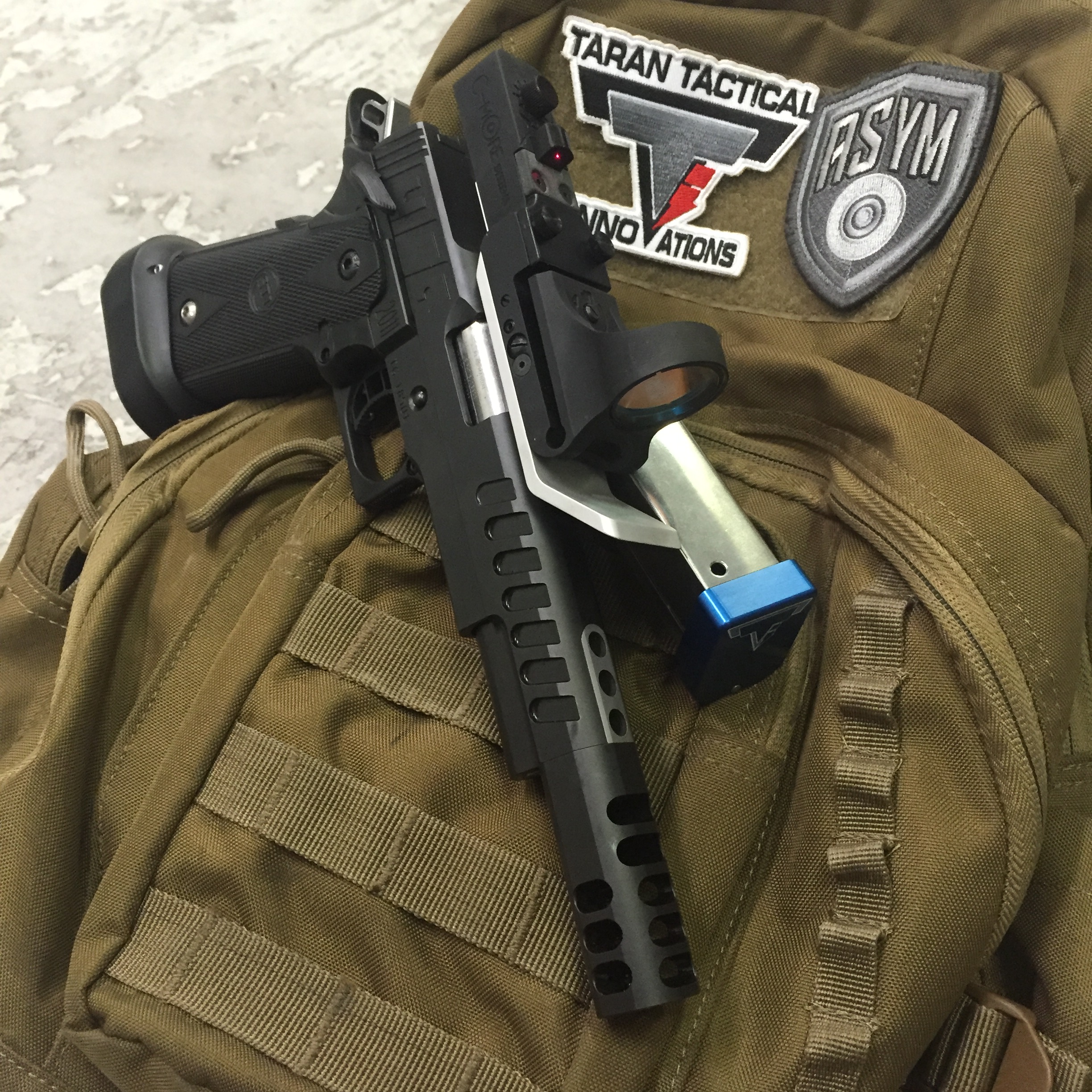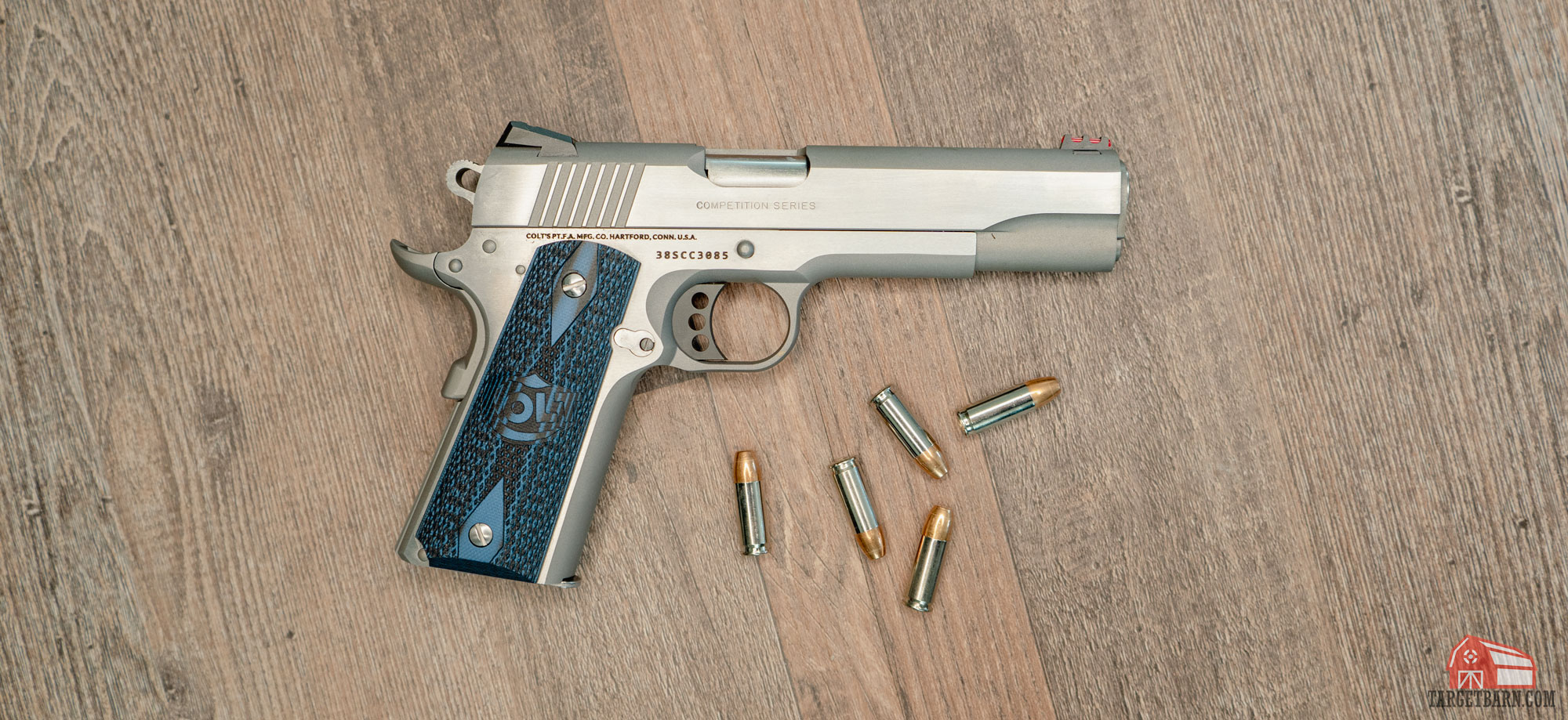.38 V 9mm - The .38 Special is a Smith & Wesson centerfire framed cartridge. The 9mm Luger, also known as the 9X19mm Parabellum, was designed by George Luger and is the most popular and widely used military pistol cartridge.
The .38 Special was introduced in 1898 as a military cartridge because the .38 Long Colt did not have enough stopping power against the wooden shields of the Moros during the Philippine-American War. The .38 Special bullets can be fired from revolvers that can chamber either the .357 Magnum or the .38 Long Colt because only the length of the .38 Special case is different. But the .357 Magnum is more powerful and cannot be fired from a revolver chambered for a .38 Special. The 9mm Luger was designed by George Luger from his earlier 7.65×21mm Parabellum. In 1902 he presented it to the British Small Arms Board. In 1903, he presented 3 prototypes to the US Navy. The German Navy adopted it in 1905, and the German Army in 1906.
.38 V 9mm

Side by side comparison of common pistol bullets. LR: (1) 3 in 12 ga magnum shotgun shell (for comparison), (2) "AA" size battery (for comparison), (3) .454 Casull, (4) .45 Winchester Magnum, (5) . 44 Remington Magnum, (6) .357 Magnum, (7) .38 Special, (8) .45 ACP, (9) .38 Super, (10) 9mm Luger, (11) .32 ACP, (12) . 22 LR
Magnum Vs. 9mm
Initially, the .38 Special was introduced as a powder cartridge, and later due to its popularity, it was produced as a smokeless powder charge. Initially, the 9mm Luger was a lead core. But during World War II to save lead, it was made using an iron core jacket. In 1944, normal copper-core cartridges were produced.
The .38 Special was popular with US law enforcement and was used by the US Air Force, Navy and Marine Corps. But their popularity has declined due to the higher capacity and faster loading of semi-automatic pistols in 9mm Parabellum, .357 SIG, .40 S&W, .45 ACP or .45 GAP versions. The .38 Special is used for target shooting, formal target matches, personal defense and small game hunting.
The 9mm Luger has become a popular caliber for US law enforcement agencies due to the availability of compact pistols with high magazine capacity that use this caliber. It is also a popular self-defense cartridge for civilians where permitted.
9mm ammunition is available in large quantities and has many variations from .38 Special ammunition. It's also cheaper.
The .38 Special Vs. The 9mm: Which Gun Caliber Is Superior?
The .38 Special can hold 5 to 6 rounds, while the 9mm Luger can hold up to 18 rounds.
The .38 Special fires bullets between 200 and 980 feet per second. Velocity varies depending on barrel length and gun type.
The 9mm fires bullets at between 1,200 and 1,430 feet per second, depending on the model. Comparison of the speed of 9 mm caliber bullets of different weights and types:

Shooting accuracy depends more on the skill of the shooter than on the bullet or gun. However, the .38 Special is known for its accuracy.
Rimless .38 Super Brass: Everything You Need To Know
The energy delivered by most 9mm pistols has high penetration and expansion with superior JHP bullets. 115gr JHP +p or +P+ is the best in this series for self defense.
The .38mm Special offers little recoil compared to the 9mm Luger. Both cartridges have less recoil compared to other cartridges such as the .40 S&W.
This video compares the recoil of common pistols including 22LR, .380 ACP, 9mm Parabellum, .45 ACP, .357 Magnum and 38SPC. The two most popular cartridges for everyday carry are the 38 Special and the 9mm Luger. Is there a definitive winner in the 38 Special vs. 9mm debate? Or do they each offer different benefits? The fact that they are both so popular suggests that the latter is the case.
Too many articles like this get bogged down in the long history of the containers they compare. We assume that you are not particularly interested in how the Spanish-American War led to the development of the 38 Spl. It probably doesn't matter to you either what color socks Georg Luger liked to wear. You want to know what type of ammunition to use for self-defense. Therefore, we will compare the ballistic performance, stopping power, recoil and other features of the 38 Spl and the 9mm.
Acp Vs. 38 Super
It would not be fair to compare the 38 Spl and the 9mm without first noting that they are designed for very different pistols.
38 Spl is a rimmed cartridge, while 9mm is rimless. The bullet casing has a lip to ensure it fits properly in the revolver cylinder. Some semi-automatic weapons are designed for rimmed cartridges, although they are not considered very reliable. There are also rimmed revolvers for rimless cartridges, but most cartridges such as 9mm, 40 S&W, and 45 ACP are for semi-automatic weapons.
Whether you prefer the 38 Spl or the 9mm comes down almost entirely to whether you want to carry a revolver or a semi-auto. Slant nose revolvers chambered in 38 Spl are extremely popular because they are so light, yet pack a lot of power. The main advantage of revolvers is their exceptional reliability. They have very few moving parts. I can hardly get stuck. If one round doesn't fire, just pull the trigger to move on to the next. That's the kind of peace of mind that many people demand from carrying a gun.

A well-maintained semi-automatic can of course still be extremely reliable. They can also be very light, like the Glock 43 which weighs only 17.95 grams empty. Even that very small rifle has a six-round magazine, which is one round more than a 38 Spl snub nose like the S&W Model 642. Semi-autos tend to be easier to load as well. Although you shouldn't overlook the convenience of a moonclip or speedloader if you ever need to reload a revolver quickly.
Special Vs. 9mm Caliber Bullets
We can go on if we really just want to emphasize what we've already said. We recommend choosing the 38 Special if you want to carry a revolver. If you're dedicated to semi-auto pistols, go for the 9mm.
By comparing the dimensions of these two circles, we can notice several important things. First, their bullet diameters are almost identical. This might make their ballistics and terminal performance somewhat comparable, but 38 Special ammo and 9mm certainly don't share the same bullet. A 38 spl bullet usually weighs between 110 and 158 grains, while a 9mm bullet almost always weighs 115, 124 or 147 grains. (For reference, there are 437.5 grains in an ounce.)
More importantly, the 38 Spl is about 50 percent longer than the 9mm. The casing therefore has almost double the propellant capacity. Even so, the 38 Spl generally does not contain significantly more propellant, and its maximum pressure under load is only half that of 9mm. Here we see an interesting phenomenon where the cartridge is bigger, but not necessarily stronger!
Comparing the ballistic performance of these two bullets is a difficult task. For example, a 38 Spl +P bullet fired in a rifle will perform incomparably to a subsonic 9mm bullet fired in a subcompact pistol.
A Brawny Handful Of Revolver And The .38 44 Buffalo Bore
Also, note the comparison of Hornady's two accusations. They are quite analogous to each other and both collected ballistic data from the same length of test barrel. Ideally, you would have the same length of test tube, as then the propellant gases of both bullets would have about the same time to transfer their energy to their respective bullets.
The ballistics of the 9 mm in flight immediately looks a little nicer. It allows for higher barrel velocity and, in fact, a flatter trajectory. The ballistic coefficients of the two bullets (which measure their ability to overcome air resistance in flight, with a higher number being better) are nearly identical, meaning they should decelerate at the same rate and have variable resistance to wind deflection.
In practice, both bullets would prove to be more than accurate at the distances at which they would likely be fired. Sure, people hunt varmint with 38 Spl and 9mm at long range. However, both are perfectly usable for bridging short distances that would likely play out in self-defense scenarios.

We should preface it by saying that power isn't the only thing that matters when it comes to braking power. Sectional density (i.e. penetrating ability) and terminal ballistics also count a lot. But barrel energy is most important, and the 9mm is definitely the better bullet when it comes down to it.
Vs. 38 Special
The amount of energy a bullet can transfer to a target is determined solely by its mass and velocity. We'll spare you the physics behind that statement, but you can clearly see why a 115 grain bullet traveling at 1135 fps will outperform a lighter bullet traveling slower. Even when the 38 Spl bullet is significantly heavier, the muzzle velocity becomes much less than even the heaviest 9mm bullets.
The minimum amount of energy recommended for self defense is 220 ft lbs. Really, 300 ft lbs or more is what you want. In this connection
V belt a 38, hornady v max 9mm, which is bigger 38 or 9mm, veja v lock 38, 38 inch v belt, 38 9mm, sig v crown 9mm review, pegasus 37 v 38, 38 or 9mm, 38 and 9mm, bentone 38 v cg, mgs v mission 38
0 Comments